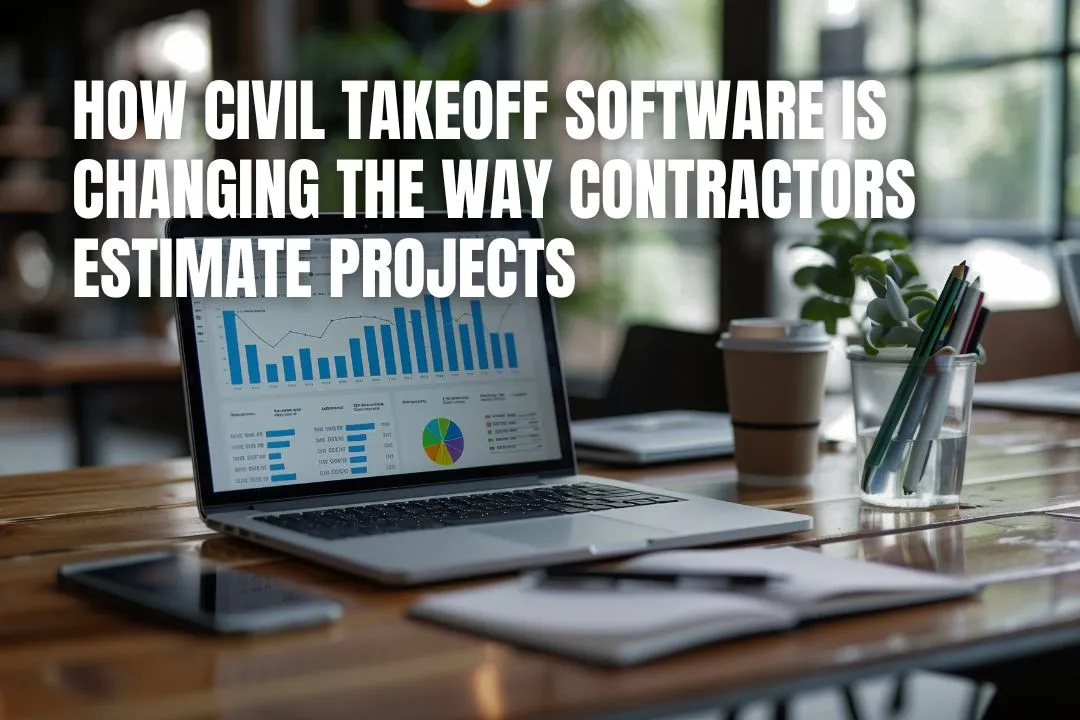
Editorial Disclaimer
This content is published for general information and editorial purposes only. It does not constitute financial, investment, or legal advice, nor should it be relied upon as such. Any mention of companies, platforms, or services does not imply endorsement or recommendation. We are not affiliated with, nor do we accept responsibility for, any third-party entities referenced. Financial markets and company circumstances can change rapidly. Readers should perform their own independent research and seek professional advice before making any financial or investment decisions.
Civil contractors don’t have time to waste. When you're managing site grading, stormwater systems, trenching, and concrete accuracy matters, but so does speed. And let’s be honest, measuring all that manually or tracing PDFs with a mouse just doesn’t cut it anymore.
That’s where civil takeoff software is changing how estimators work. Instead of getting buried in paper plans and spreadsheet tabs, teams are automating the grind and focusing on bids that actually win.
If you’ve ever spent two days calculating cut-and-fill on a 30-acre site, you know how frustrating takeoffs can be. You might still be switching between CAD exports, scaling tools, and trying to make sure you didn’t miss a trench or inlet.
The real problem? Manual takeoffs:
When 50% of your bid cycle is spent just doing the takeoff, that’s time you’re not using to fine-tune numbers, run value engineering options, or respond to GC questions.
Civil takeoff software isn’t just faster. It’s smarter. Instead of pointing and clicking, you upload your site plans, define your scope, and let the system pull quantities automatically.
For example, tools like Beam AI process your plans in the background and get you a ready-to-use takeoff, reviewed by the Q&A team, in about 24 to 72 hours. That means:
Beam AI can help civil teams save up to 90% of the time they used to spend on takeoffs. And when you save time, you can send out 2x more bids without needing more staff.
Estimating drywall is one thing. Civil projects are on another level. You’ve got topography, soil types, pipe runs, slope percentages, and long-haul concrete pours, all before you even talk materials.
This is why civil takeoff software is built differently. It handles:
And unlike drywall takeoff software or landscaping takeoff software, it understands volume-based scopes, elevation shifts, and phased drawings. That means fewer surprises later, and more trust in your numbers when it’s time to price.
If your team is spending three days doing a single takeoff, you probably can’t bid more than a few jobs a week. That’s a growth ceiling.
With civil takeoff software:
Beam AI users have been able to run multiple takeoffs at once and still turn around bids faster than they did before. And they do it without sacrificing accuracy: every takeoff is QA-reviewed before it’s delivered.
Manual takeoffs leave room for guesswork. You hope you got all the utility runs. You think you counted every structure. But when it’s on you to trace and measure every inch, it’s easy to miss something.
Civil takeoff software takes that risk off your plate. You get:
That level of transparency helps you win trust with GCs and owners, and that often wins the job.
Estimating civil jobs doesn’t need to be exhausting. You don’t have to spend your nights cross-checking plan sheets or worrying if you missed a culvert. Civil takeoff software lets you move faster, quote smarter, and grow your business without burning out your team.
If you're still relying on old tools to estimate massive site scopes, now’s the time to change that. Contractors using tools like Beam AI aren’t just getting bids out faster. They’re winning more of them.
And that’s the point, right?
It is a specialised tool that automates the process of measuring and calculating material and labour quantities for civil engineering projects. Instead of manually tracing plans, you upload digital blueprints, and the software extracts the necessary data for your estimate.
Contractors can save a significant amount of time, with some tools like Beam AI reducing the time spent on takeoffs by up to 90%. This allows estimating teams to send out twice as many bids without needing additional staff.
Manual takeoffs are not only slow but also prone to costly errors. They can burn out your estimating team and create a bottleneck that limits how many jobs your company can bid on, ultimately restricting growth.
It is built to handle the specific complexities of civil projects. This includes calculating cut-and-fill for grading, measuring trenching and backfill for utility systems, and accounting for topography and elevation shifts, which other tools may not manage accurately.
No, it actually improves accuracy. The software removes the risk of human error from manual measurements. Many services also include a quality assurance review to ensure the quantities are correct before you receive them, giving you more confidence in your numbers.
Civil contractors don’t have time to waste. When you're managing site grading, stormwater systems, trenching, and concrete accuracy matters, but so does speed. And let’s be honest, measuring all that manually or tracing PDFs with a mouse just doesn’t cut it anymore.
That’s where civil takeoff software is changing how estimators work. Instead of getting buried in paper plans and spreadsheet tabs, teams are automating the grind and focusing on bids that actually win.